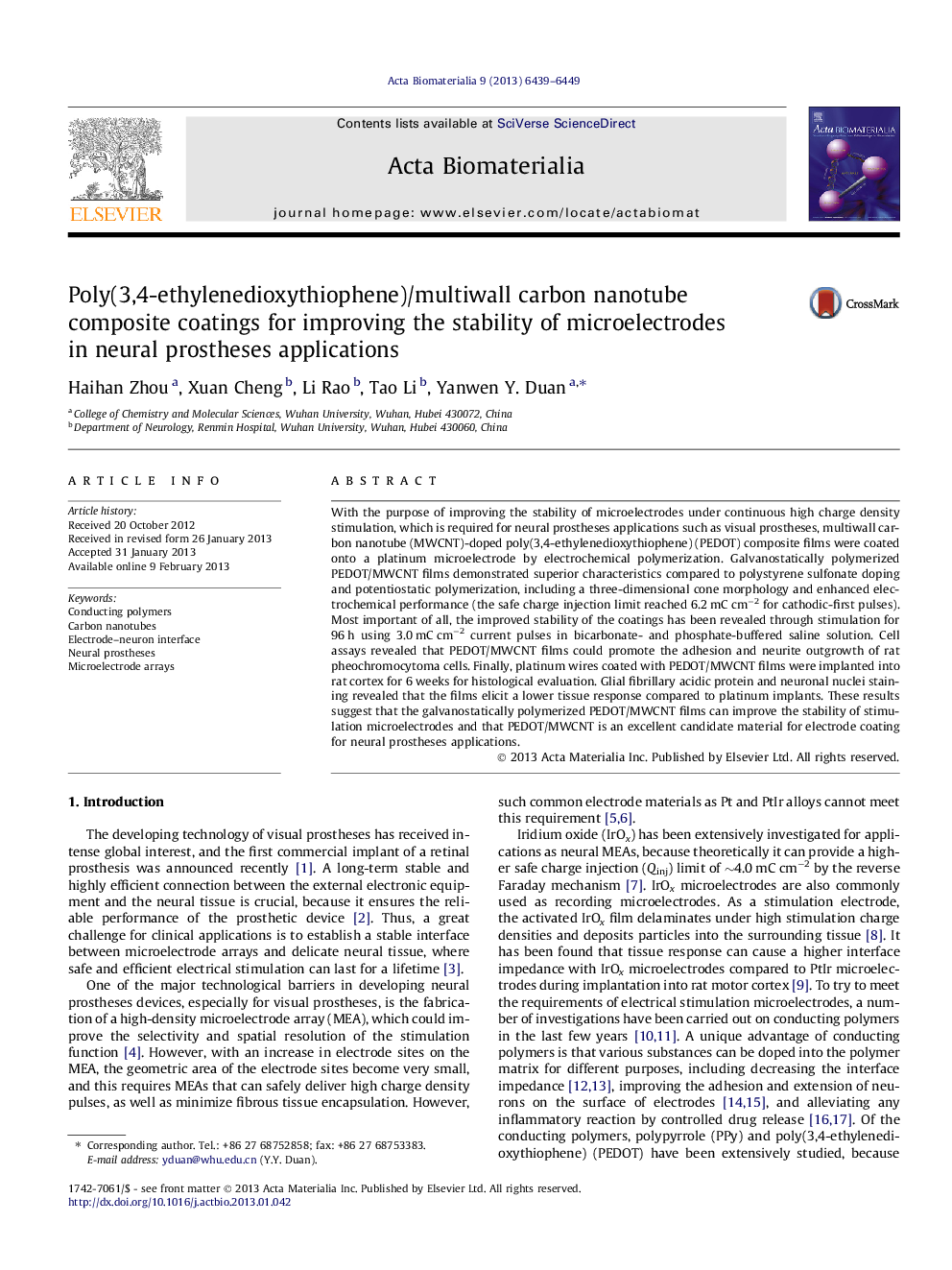| Article ID | Journal | Published Year | Pages | File Type |
|---|---|---|---|---|
| 10159906 | Acta Biomaterialia | 2013 | 11 Pages |
Abstract
With the purpose of improving the stability of microelectrodes under continuous high charge density stimulation, which is required for neural prostheses applications such as visual prostheses, multiwall carbon nanotube (MWCNT)-doped poly(3,4-ethylenedioxythiophene) (PEDOT) composite films were coated onto a platinum microelectrode by electrochemical polymerization. Galvanostatically polymerized PEDOT/MWCNT films demonstrated superior characteristics compared to polystyrene sulfonate doping and potentiostatic polymerization, including a three-dimensional cone morphology and enhanced electrochemical performance (the safe charge injection limit reached 6.2Â mCÂ cmâ2 for cathodic-first pulses). Most important of all, the improved stability of the coatings has been revealed through stimulation for 96Â h using 3.0Â mCÂ cmâ2 current pulses in bicarbonate- and phosphate-buffered saline solution. Cell assays revealed that PEDOT/MWCNT films could promote the adhesion and neurite outgrowth of rat pheochromocytoma cells. Finally, platinum wires coated with PEDOT/MWCNT films were implanted into rat cortex for 6Â weeks for histological evaluation. Glial fibrillary acidic protein and neuronal nuclei staining revealed that the films elicit a lower tissue response compared to platinum implants. These results suggest that the galvanostatically polymerized PEDOT/MWCNT films can improve the stability of stimulation microelectrodes and that PEDOT/MWCNT is an excellent candidate material for electrode coating for neural prostheses applications.
Related Topics
Physical Sciences and Engineering
Chemical Engineering
Bioengineering
Authors
Haihan Zhou, Xuan Cheng, Li Rao, Tao Li, Yanwen Y. Duan,
